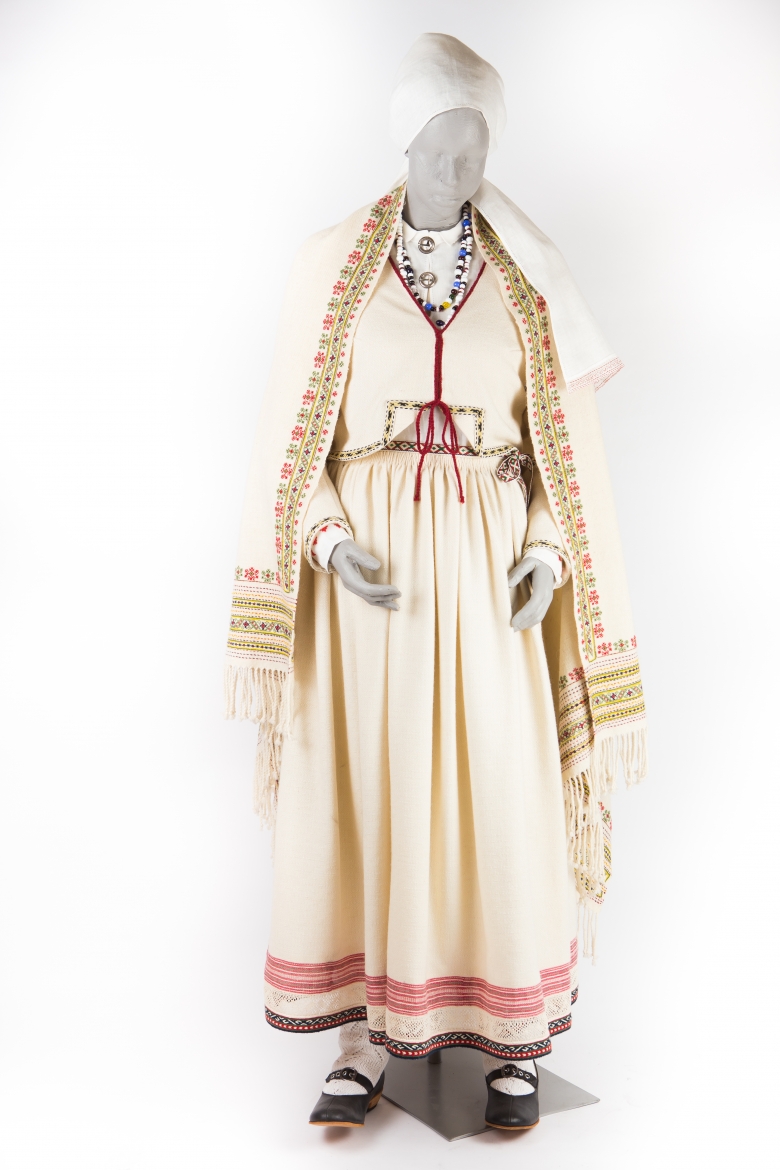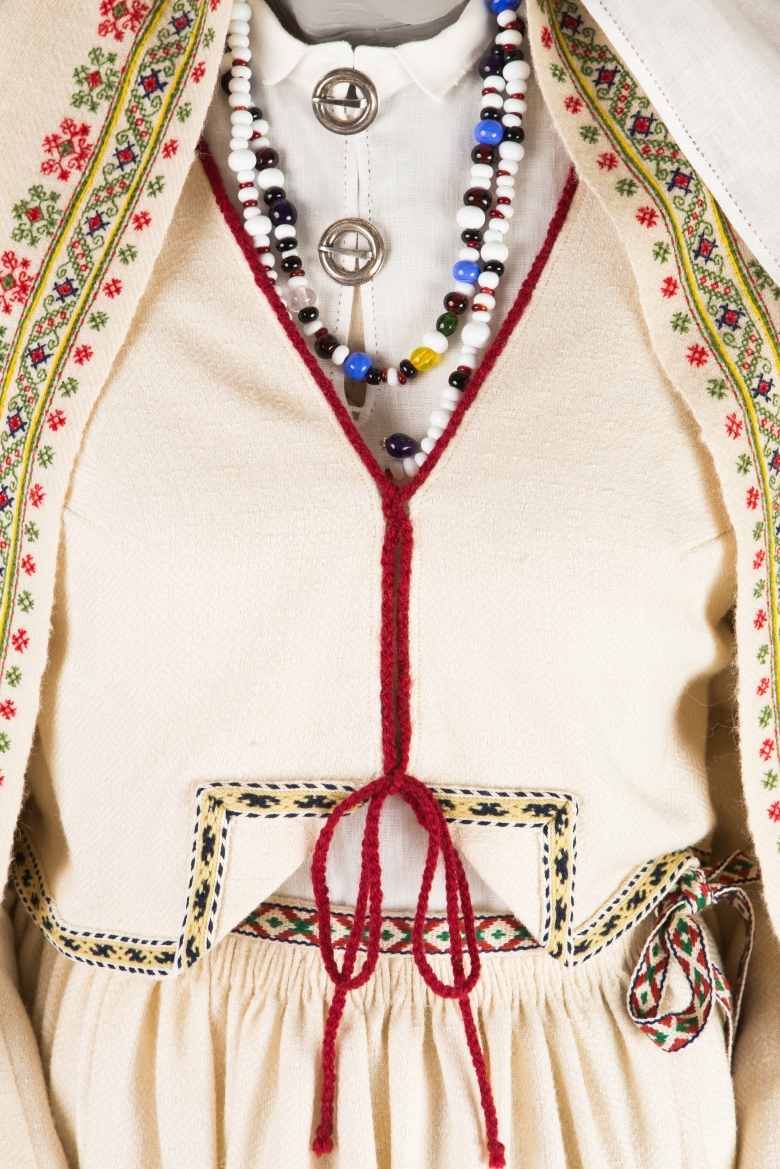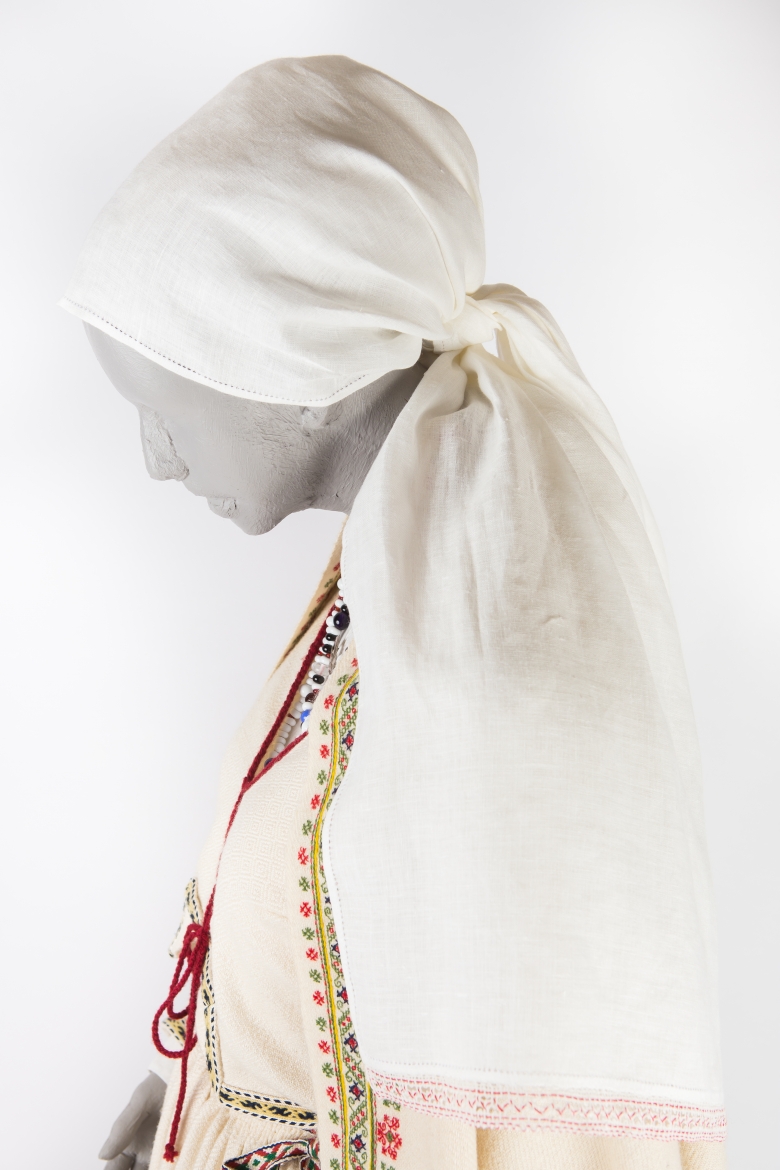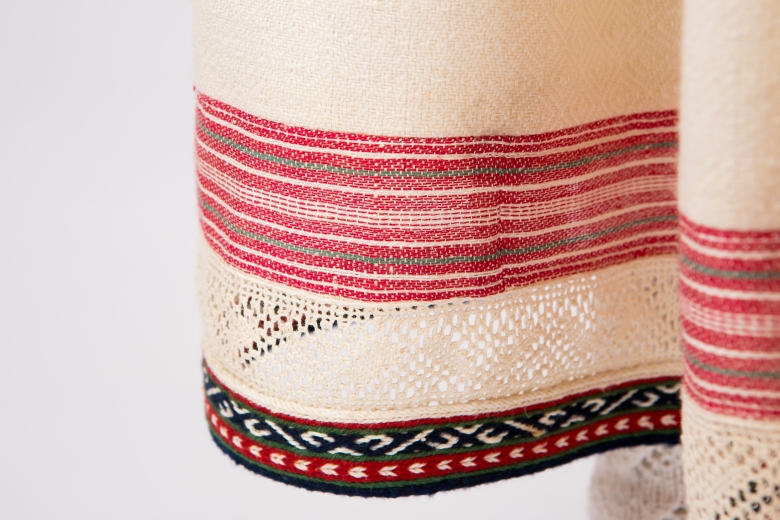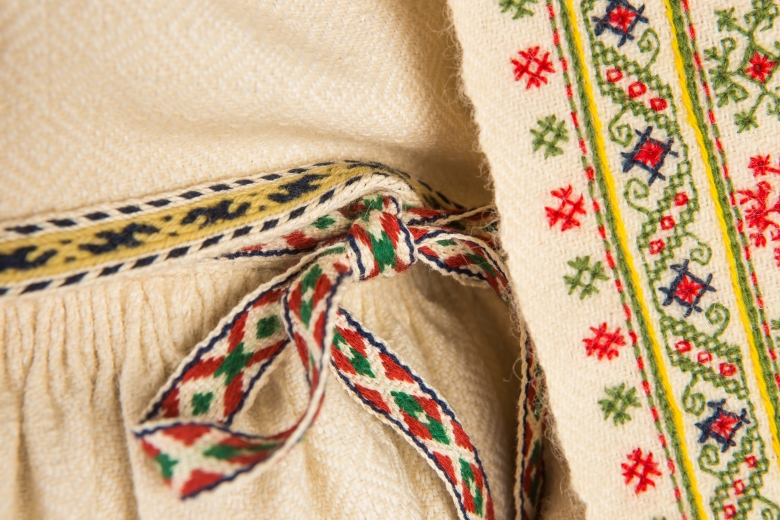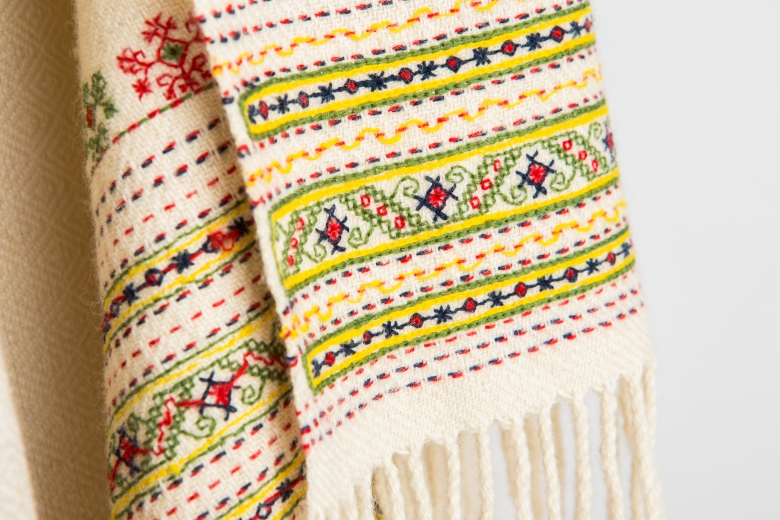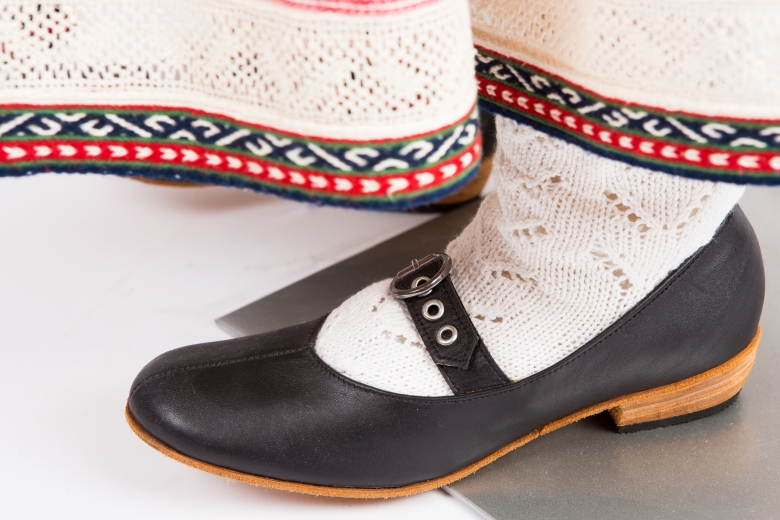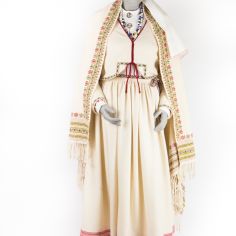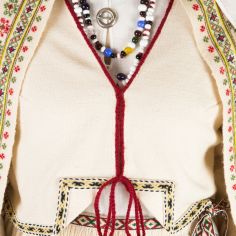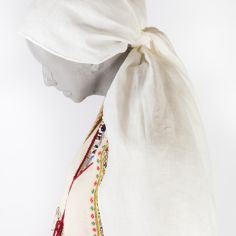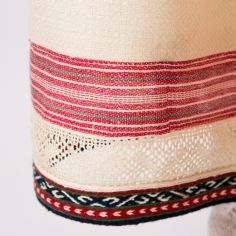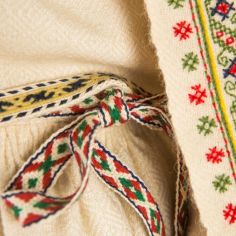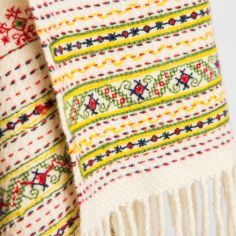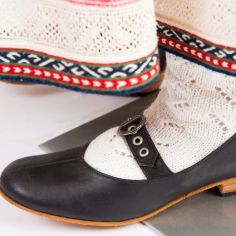Women’s Clothing from Northern Latgale
Brief information
- Shirts – straight cut, mid-calf linen with red embroidery and either a turnover or stand-up collar;
- Skirts – full and gathered of white fabric with deep borders along the lower hem; alternatively, plaid or striped without borders;
- Belts – either striped or chevron-patterned weaves; narrow patterned belts attached to the waistband of the skirts;
- Aprons – long and relatively wide white aprons with red and white embroidery;
- Jackets – white fabric with decorative edging, worn with white skirts;
- Shawls – white wool embellished with multi-coloured embroidery or a linen shawl (snātene) with a red fringe;
-
Headdresses –
- an unmarried woman’s headdress was the crown-type vainags, made of red fabric embroidered with glass seed beads;
- a married woman’s headdress was a linen fabric headcloth, embellished with whitework embroidery, and a short red and white fringe;
- Legwear – knitted, white knee-length socks;
- Jewellery – a small to medium size silver annular brooch (sakta) was used to fasten the shirt; a multi-coloured glass bead necklace could also be worn.
History and Origin
Women’s clothing of the Northern Latgale district was characterized by a straight cut, mid-calf length linen fabric shirt, made of separate, rectangular fabric segments or a tunic-type shirt where the front and back are made of one contiguous piece of fabric folded over at the shoulders. The body of the shirt was woven in a diamond twill pattern, differing from the plain weave of the rest of the shirt. The shirt has stitched-on shoulder straps and red embroidery on the turnover collar, shoulder straps, and cuffs. The red embellishment on the shoulder straps was woven. The shirt was fastened with a small to medium sized silver annular brooch (sakta) or fabric ribbon.
Skirts are full and gathered. The older type was solid white, woollen or linen fabric with a multi-part border along the hem, consisting of a seperately woven, predominantly red striped band, alongside a bobbin-lace band, finished with a tablet-woven band along the hemline. Some skirts only had a tablet-woven band or lacked the bobbin-lace. A belt woven in the Auleja style was attached to the waistband. Skirts from more recent times show a variety of plaids and occasionally stripes.
Belts are usually tablet-woven in either chevron or striped patterns.
The white linen apron is long and wide, almost down to the hem, embellished with red and white embroidery.
The jacket or bodice matched the white skirt. There is no evidence of jackets in other colours.
Shawls were white and embellished with multi-coloured yarn embroidery. Alternatively, a linen shawl with red and white embroidery was also possible. Linen shawls were woven in a number of different lace weave patterns to produce a textured surface.
An unmarried woman’s headdress was a crown-like vainags, made of red fabric embroidered with multi-coloured glass seed beads.
A married woman’s headdress was a white linen fabric headcloth completely covering the hair, wrapped around the head and tied at the nape of the neck. The ends of the headcloth may be embellished with embroidery and a short, red and white fringe. Single or multiple strand necklaces of solid coloured glass beads may also be worn.
Legwear consisted of white wool socks.
Footwear usually consisted of flat, leather, lace-up shoes (pastalas). Shoes would have been worn in more recent times.
